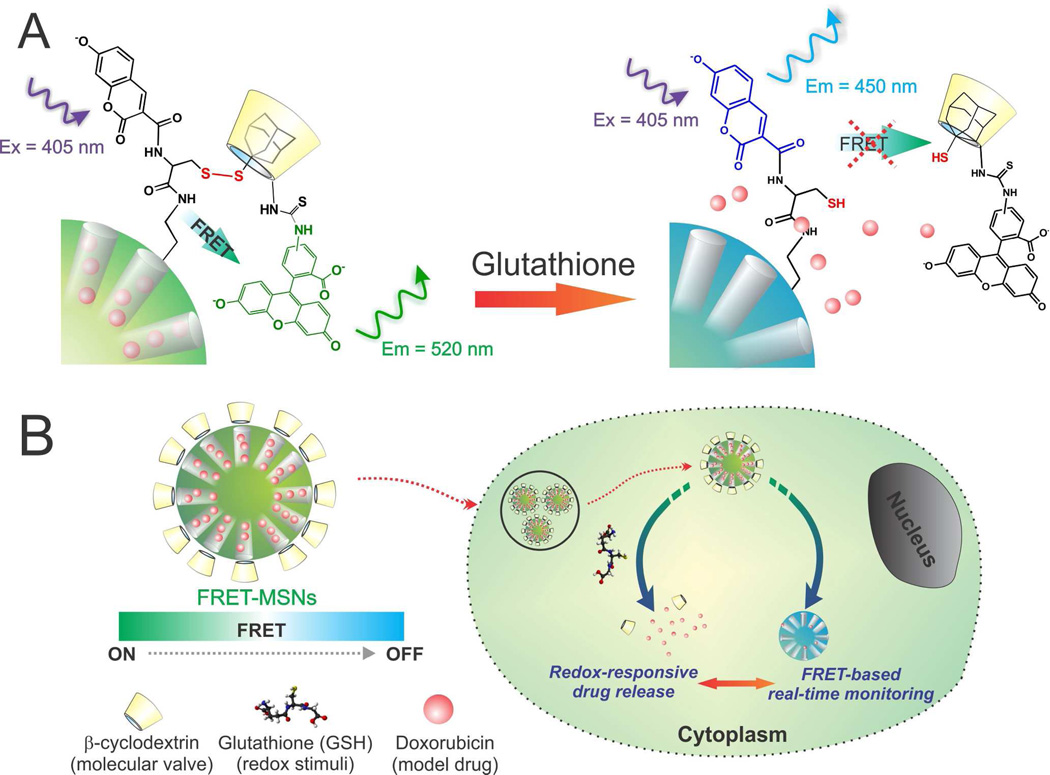Figure 1.
Schematic representation of the redox responsive FRET-MSNs. (A) The coumarin-labeled cysteine on the surface of the FRET-MSNs act as a donor and the FITC-β-CD act as an acceptor, thereby forming a FRET system when the disulfide bond is intact (left). When disulfide bond is cleaved in the presence of redox stimuli, glutathione, the FITC-β-CD, which also acts as the molecular valve, is removed from the surface of the MSNs, thereby the FRET between coumarin and FITC is abolished. (B) The delivery of encapsulated cargo is selectively triggered in the presence of the redox-stimuli, glutathione which is found in significantly higher amounts in the cytoplasm of cancer cells and the concomitant change of FRET signal can be used to report the uncaging event and estimate the dosing amount of drug. Figure 1A is a magnified representation of Figure 1B, indicating the FRET system.

